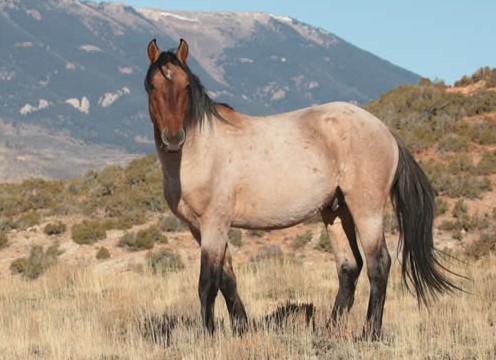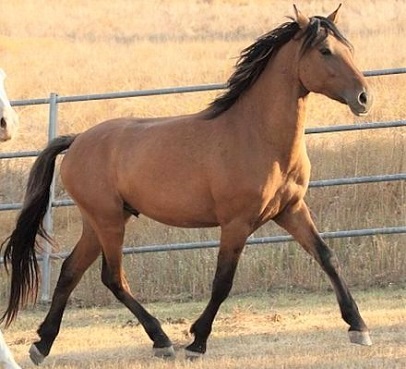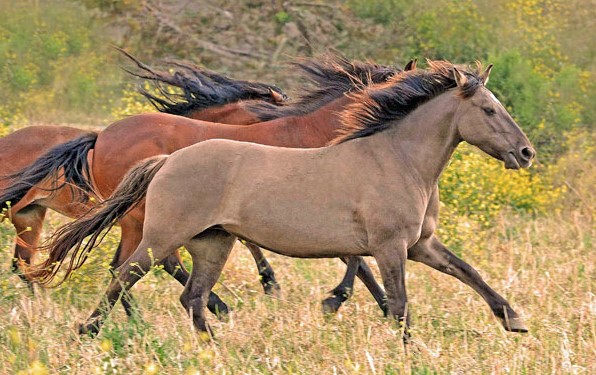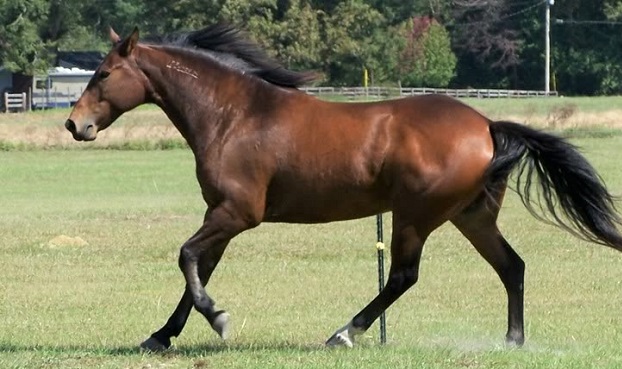Mustangs are a symbol of the American Wild West, but did you know there are different types of Mustang horses?
There are six types of Mustang horses found in America: the Pryor Mountain Mustang, Kiger Mustang, Cerbat Mustang, Spanish Mustang, Chincoteague Pony, and the Colonial Spanish Mustang. Each one has unique characteristics that set them apart.
Mustangs are descendants of Spanish horses brought to the Americas in the 1500s. The original Mustangs were the Colonial Spanish Horses, but over hundreds of years, other breeds and types of horses have been mixed in. This resulted in different breeding populations and distinct characteristics that set them apart.
Though they are often referred to as wild horses, Mustangs are technically feral horses, as they are descendants of once domesticated horses.
The horses that roam freely across America are managed by different organizations including the Burea of Land Management (BLM), Forest Service, National Parks, Tribal Lands, and State-Owned.
Here are some of the different types of Mustang horses that are distinct for their location, conformation, colors, and heritage.
Pryor Mountain Mustang

Credit: pryormustangs.org
The Pryor Mountains of Montana are home to the Pryor Mountain Mustangs, which many consider to be the “purest” mustangs. They are closely linked to the original Spanish horses that were brought over to the United States.
Though not much is known on the history of the Pryor Mountain Mustang, it is said they have been roaming the region since the 1700s. They come in many different colors like bay, black, dun, grulla, roam, buckskin, and palomino, often exhibiting primitive markings.
Pryor Mountain Mustangs stand between 13-14 hands tall. They have a strong, muscular build, often with a long mane and tail, and sometimes have a Roman nose.
These intelligent horses have wonderful stamina and sure-footedness, with some having an ambling gait. The BLM manages the horses of the Pryor Mountain Range.
Kiger Mustang

You might recognize the Kiger Mustang from the classic movie Spirit: Stallion of the Cimarron. From the Beaty Butte region of Oregon, these horses have a strong influence of Spanish blood.
Also read, 4 Things You Didn’t Know About Spirit Stallion of the Cimarron or Meet the Real Spirit Horse.
Kiger Mustangs are famous for their signature dun color with dorsal stripes, however, they may also be other colors as well. Kigers typically weigh around 700-800 pounds and stand between 13.2-16 hands tall. They have a classic Barb head, compact, muscular body, and a well-crested neck.
Kigers are strong and athletic horses, with a willingness to please and a friendly personality. They make wonderful riding horses for both western and English disciplines. The BLM currently manages the Kiger Mustang herds.
Cerbat Mustang

Credit: returntofreedom.org
Found in Arizona, the Cerbat Mustang has Spanish ancestry that shines through in their appearance. Though their numbers are small, people admire them for their good looks, as many say they resemble the appearance of Andalusian horses.
Cerbat horses often weigh between 750-800 pounds and stand between 14-16 hands tall. They typically are bay in color, though they may also be strawberry and blue roans, gray, black, sorrel and dun.
Cerbat Mustangs are sturdy yet refined and they have incredible strength and stamina. The BLM manages the Cerbat Mustang herd.
Spanish Mustang

Spanish Mustangs are direct descendants of the first Spanish horses in America. Though many confuse them with feral horses of the BLM, they are different in appearance and ancestry.
The Spanish Mustang classifies within the larger grouping of the Colonial Spanish horse, which are rare. Although their herds were once prominent, the numbers of Spanish Mustangs began to dwindle in the early 20th century.
People began to take concern and made an effort to preserve their numbers by drawing horses from feral herds, Native American herds and ranch stock.
Spanish Mustangs stand between 13.2-15 hands tall and weighs between 650-1,100 pounds. They have a smooth, muscled body, well-defined necks, short backs, and straight or convex heads, coming in a large variety of colors.
Their athleticism and willingness to please make them versatile horses for both western and English riding disciplines.
Also, read our guide on whether are horses native to North America?
Colonial Spanish Mustang

Experts believe that Colonial Spanish Mustang is a descendant of a mixture of breeds that include the Spanish Barb, Arabian and Andalusian. However, unlike most domesticated horses, they have five lumbar vertebrae instead of the usual six.
There are currently two herds of Colonial Spanish Mustangs in America, the Corolla Wild Horses and the Shackelford (Banker) ponies. These native North American horses roam along North Carolina’s sandy beaches of the Outer Banks.
Colonial Spanish Mustangs stand around 12-13 hands tall and have fine, athletic builds. They are hardy ponies, with some showing the ability to naturally gait. The state of North Carolina and the National Park Service manages the horses.
Chincoteague Pony

According to legend, Chincoteague ponies are descendants of Spanish horses that fled a shipwreck off the Virginia coast. These iconic ponies have adapted to the unique environment Assateague and Chincoteague Islands they call home.
Small yet hardy, these ponies stand between 13.2-14 hands tall, weighing around 850 pounds. They come in just about every coat color and pattern.
As we mention in our wild Chincoteague Ponies guide, their bellies often look bloated, as they drink almost double the amount of water than other horses. This is due to the high levels of salt in the vegetation they eat.
Every year, the famous team penning occurs where the ponies swim from Assateague Island to Chincoteague Island. Every year there is an auction for the foals before the mares and stallions return to Assateague.
The Chincoteague Volunteer Fire Company manages horses on the Virginia side of the island and the National Parks Service manages the Maryland side.
Source: horseyhooves.com





